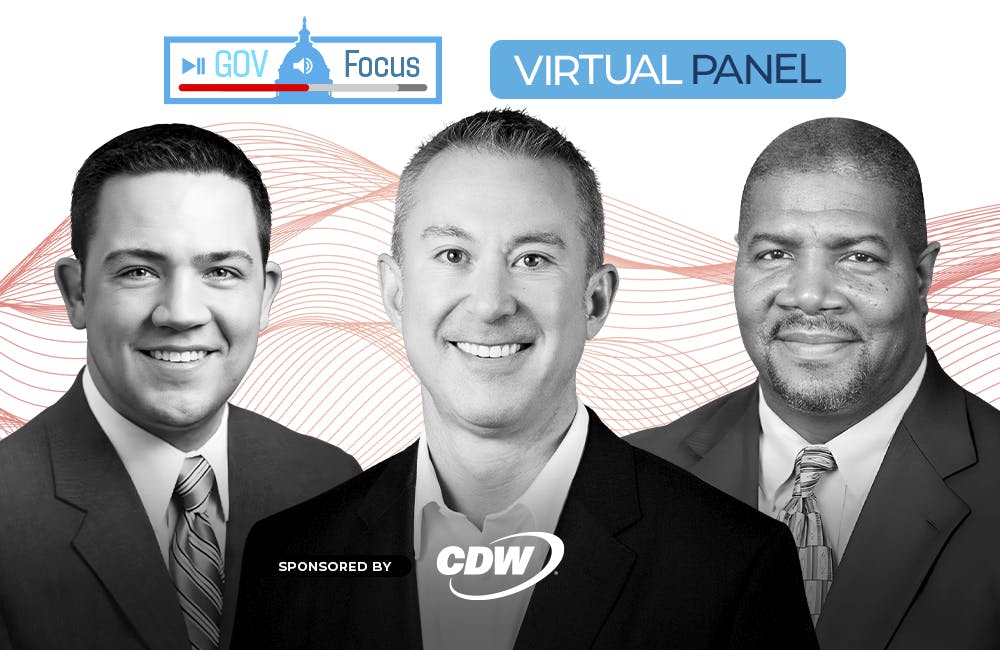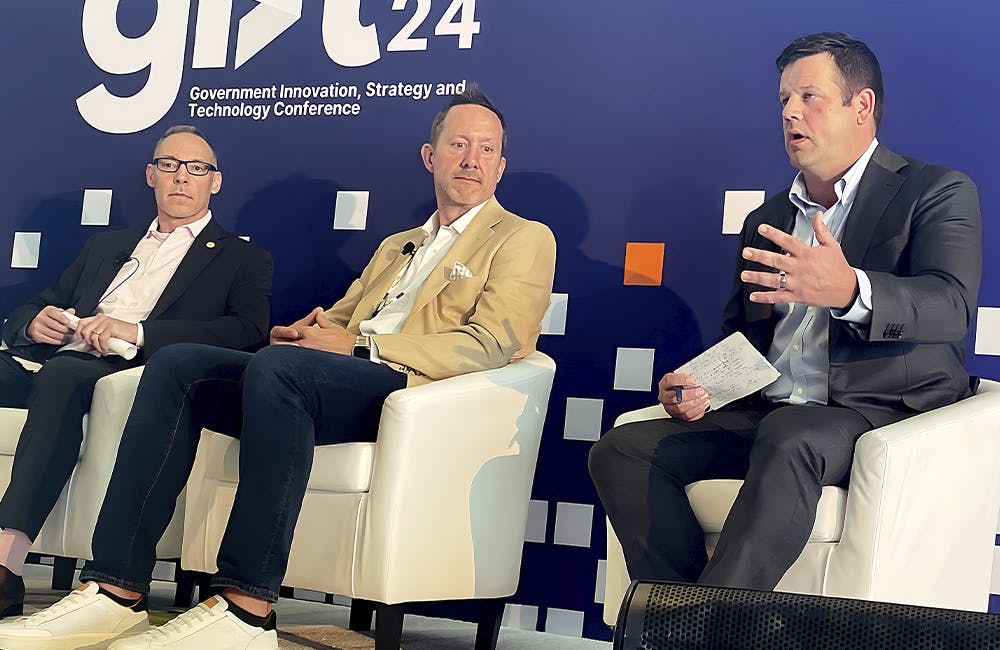Federal Digital Experience Hinges on Design, Building Trust
The recent moon landing and health insurance are some programs that benefit from strong human-centered design in digital transformation.

Leading officials from NASA, Centers for Medicare and Medicaid Services (CMS) and the Office of Personnel Management (OPM) cited impacts across key programs as examples for why integrating more human-centered design, partnerships and citizen trust are critical for federal digital transformation strategies.
Following a 2021 executive order to transform the customer experience, agencies have been rethinking how they can create organizational change and best practices to ensure a better customer experience and improve digital technologies.
For NASA, those efforts require strengthened outreach and interoperability to ultimately enable collaborative space exploration programs like Intuitive Machines’ Odysseus Mission landing. Jill Marlowe, digital transformation officer at NASA, noted during a ACT-IAC event last week, the program would be the first private spacecraft to successfully land on the moon.
“We have to make sure that our individual ways of working are interoperable and connect and are seamless with the way our partners and our suppliers all of those folks are working as well,” Marlowe said. “We have to be on the same page with the future that we’re trying to create, so that we can start just lay in kind of those digital building blocks that are going to help get us there.”
Like NASA, many other agencies are building digital transformation offices from the ground up and are facing similar challenges like using old datasets. This leads to questions about how to build trust.
Department of Labor Director of Digital Transformation Akanksha Sharma emphasized the importance of trust as agencies continue improving the customer experience.
“Building that trust within the department with the different agencies, building coalitions, building relationships is really important to not just the success of my organization, but I think digital transformation initiatives in general,” Sharma said at the event.
Design is About More Than Tech
Digital transformation is more than simply using new technology to update old systems. Administration for Children and Families’ CX Strategist and Manager Augosto Cangahuala said that user feedback and building relationships with the user base is one of the crucial elements when improving human-centered design.
“We find a lot of barriers with getting to work with some folks because we didn’t know them well enough on a different level, not just a professional level,” Cangahuala said. “Some of them respond differently to certain types of initiatives. We’re starting to promote in person meetings, as well as virtual engagements because then you get the best of both.”
Co-Founder of NASA Digital Service Shawn Chittle and his team used the MURAL method to ensure its digital transformation process includes human-centered design from the beginning. Chittle said this method also enabled the digital service team to put diversity, equity and inclusion at the forefront.
“We didn’t plan it, we didn’t strategize it. We just started doing it,” Chittle said. “We invited hundreds of people at a time to try to do an outcomes-based decision in a different way. We just let people write their sticky notes down. No one can delete someone else’s sticky note. No one covers it up; everyone gets to talk, everyone has a voice.”
U.S. Citizenship and Immigration Services Director of User Experience Amanda Damewood said the point of transformation is not “just to transform, but to have better outcomes” for the people who these agencies serve.
“If you can get people to admit they don’t know someone’s lived experience and get people to listen to some qualitative call center feedback, then take that information and put it in the continuous program improvement process that they’re already working like that’s pretty much the human-centered design process,” Damewood said. “We’re not asking you to completely reinvent the wheel … we’re just asking you to try to take some of what people have to tell us about how our processes are working for them.”
Chittle provided a recent example from NASA’s lack of an agency-wide policy for shipping and logistics between centers. He said the digital services team visited different centers across the country to interview and discuss their processes. Other departments of NASA attended the interviews without a detailed understanding of human-centered design.
“The strategic infrastructure team has no idea what human-centered design or user research is, but they were asking questions that I will be asking. After a few of these [interviews], we discovered one center had a shipping solution that would scale to the rest of the agency,” Chittle said. “Instead of spending $10 million on a new platform, we ended up spending zero because they already had it just no one knew about it, but and that would have never been uncovered had we not done that user research.”
Learning from the Private Sector
Andrea Fletcher, chief digital strategy officer at CMS, detailed a personal account of her parents’ experience navigating signing up for Medicare. Fletcher started with how her grandparents signed up for Medicare, and how drastically different the process is now as people are using a broker or using social media influencers like Medicare School to navigate the process.
“Currently [to sign up] you have to go to the Social Security’s website. You … fill out a PDF and download it and it’s a really bad process, if I’m being honest,” Fletcher said. “The next version of digital transformation is asking, ‘Do they even need to fill that form out? Do we already have their information and can we automatically enroll them? Are they using computers? Or are they using tablets and smartphones?’… These are the kinds of questions that we’re asking now.”
Fletcher highlighted a challenge in digital transformation is setting standards to ensure people don’t need a user manual to navigate government websites. Another challenge area was complacency and understanding that the work around digital transformation will “never be done.” Beth Martin, digital services expert at OPM, cited the CalFresh initiative of allowing people to begin the application process on their phones and finish the forms in the office when a signature was required.
“I think we really need to have a better sense of the needs and the life experiences people are having,” Martin said. “Whatever we can do to make that journey better for people is really the right thing to do, and that really requires a lot of thought.”
Maximus Vice President of Digital Growth Raymond Holder asked government agencies to focus on culture, especially as some agencies have yet to lean into human-centered design. Holder referred to “pinch points,” like when customers need to repeat personal information through the phone and online forms, as crucial moments in the customer journey that can influence the digital transformation process.
“What I see across the government is that some agencies are thinking about optimizing the logistics of how they execute [human-centered design] and others are just really stepping back and thinking strategically about what our customers’ experiences are,” Holder said.
“Whether it’s TSA or it’s Department of Energy, what is it like for a citizen to go through an airport, and what are those pinch points, those things that are working well and not well, and actually mapping that working backwards,” he added.
This is a carousel with manually rotating slides. Use Next and Previous buttons to navigate or jump to a slide with the slide dots
-

Transitioning Systems for Modern Agency Missions
IT modernization is a constant process necessary for improving customer service, mission delivery and collaboration.
40m watch -

How TMF is Helping Agencies Accelerate Tech Modernization
The program launched a new AI pilot to expedite TMF applications as agency leaders urge more to consider applying for funds.
4m read -

Agencies Want to 'Demystify' Generative AI to See Greater Adoption
Managing concerns over generative AI capabilities requires sharing best practices and use cases for workflows.
2m read -

Defense Planning Commission Recommends Common Analytics System
The group's report says that data modernization is critical to streamlining and providing agility to budgeting process.
3m read








